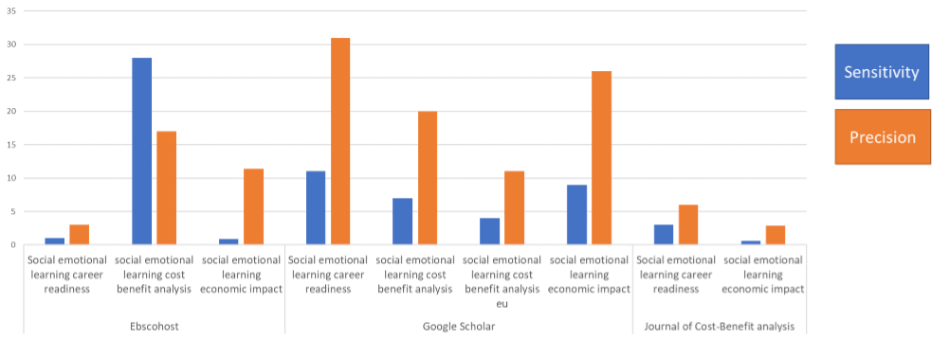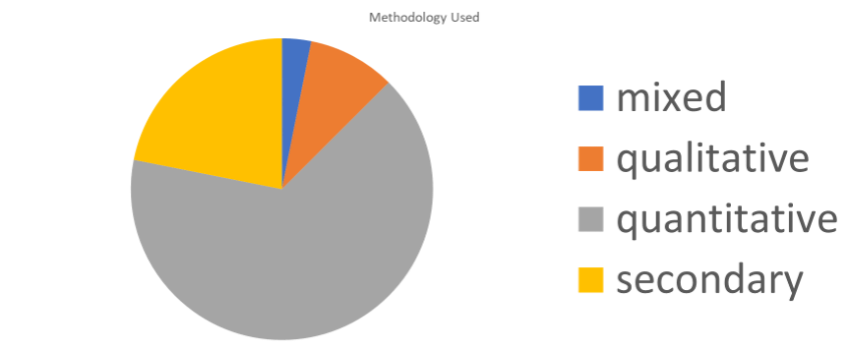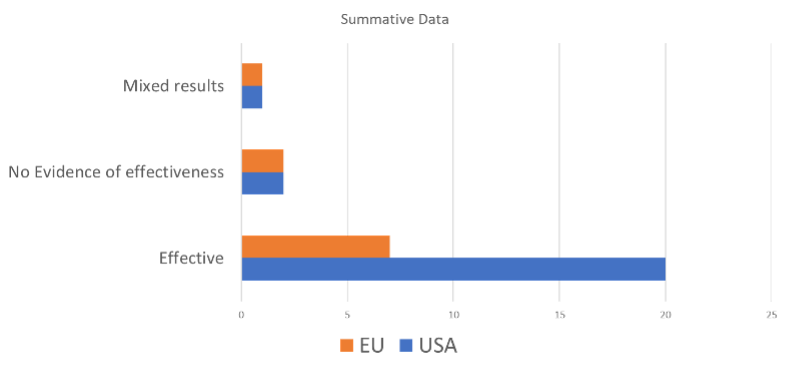- Home
- About WVN
-
WVN Issues
- Vol. 1 No. 1 (Oct. 2017) >
- Vol. 2 No. 1 (Feb. 2018) >
- Vol. 2 No. 2 (Jun. 2018) >
- Vol. 2 No. 3 (Oct. 2018) >
- Vol. 3 No. 1 (Feb. 2019) >
- Vol. 3 No. 2 (Jun. 2019) >
- Vol. 3 No. 3 (Oct. 2019) >
- Vol. 4 No. 1 (Feb. 2020) >
- Vol. 4 No. 2 (Jun. 2020) >
- Vol. 4 No. 3 (Oct. 2020) >
- Vol. 5 No. 1 (Feb. 2021) >
- Vol. 5 No. 2 (Jun. 2021) >
- Vol. 5 No. 3 (Oct. 2021) >
- Vol. 6 No. 1 (Feb. 2022) >
- Vol. 6 No. 2 (Jun. 2022) >
- Vol. 6 No. 3 (Oct. 2022) >
- Vol. 7 No. 1 (Feb. 2023) >
- Vol. 7 No. 2 (Jun. 2023) >
- Vol. 7 No. 3 (Oct. 2023) >
- Vol. 8 No. 1 (Feb. 2024) >
-
Events
- CIES 2023, Feb. 14-22, Washington D.C., USA
- ICES 4th National Conference, Tel Aviv University, Israel, 20 June 2021
- 2022 Virtual Conference of CESHK, 18-19 March 2022
- ISCEST Nigeria 7th Annual International Conference, 30 Nov.-3 Dec. 2020
- 3rd WCCES Symposium (Virtually through Zoom) 25-27 Nov. 2020
- CESA 12th Biennial Conference, Kathmandu, Nepal, 26-28 Sept. 2020
- CESI 10th International Conference, New Delhi, India, 9-11 Dec. 2019
- SOMEC Forum, Mexico City, 13 Nov. 2018
- WCCES Symposium, Geneva, 14-15 Jan. 2019
- 54th EC Meeting, Geneva, Switzerland, 14 Jan. 2019
- XVII World Congress of Comparative Education Societies, Cancún, Mexico, 20-24 May 2019
- ISCEST Nigeria 5th Annual Conference, 3-6 Dec. 2018
- CESI 9th International Conference, Vadodara, India, 14-16 Dec. 2018
- ICES 3rd National Conference, Ben-Gurion University, Israel, 17 Jan. 2019
- WCCES Retreat & EC Meeting, Johannesburg, 20-21 June 2018
- WCCES Symposium, Johannesburg, 21-22 June 2018
- 5th IOCES International Conference, 21-22 June 2018
- International Research Symposium, Sonepat, India, 11-12 Dec. 2017
- WCCES Info Session & Launch of Online Course on Practicing Nonviolence at CIES, 29 March 2018
- WCCES Leadership Meeting at CIES, 28 March 2018
- 52nd EC Meeting of WCCES, France, 10-11 Oct. 2017
- UIA Round Table Asia Pacific, Chiang Mai, Thailand, 21-22 Sept. 2017
- Online Courses
|
Abstract Social-Emotional Learning (SEL) has been demonstrated to positively impact student outcomes (Kendziora & Yoder, 2016; Weissberg et al., 2017). Further, some research has shown significant economic benefits to the effects generated by SEL (Berry et al., 2016; Jones et al., 2017). Yet, despite these benefits, policymakers have been hesitant to implement SEL programs due to perceived cost barriers (Weissberg et al., 2017). To address this need, we undertook a systematic review of the literature on the costs and benefits of SEL programs. Our research indicates that while some work has taken place on the economic benefits and costs of SEL, additional research is needed to demonstrate the cost-effectiveness of these SEL programs. The United Nations has identified equitable quality school access as a critical goal in SR4. The key to accomplishing this objective has been ensuring that policymakers have implemented effective evidence-based practices with positive economic impacts and that researchers address any gaps. Researchers have argued that social-emotional learning (SEL) is linked to increased student outcomes in school performance, college readiness, and lifetime earnings (Weissberg et al., 2017). These humanistic proficiencies have allowed students – and adults - to work in teams with others, communicate their ideas, and manage their emotions (Paolini, 2020). However, despite the broad base of evidence supporting SEL, many policymakers are not implementing evidence-based practices (Weissberg et al., 2017). Further, Jones et al. (2017) have argued that critical to increasing the influence of SEL on policy is demonstrating the economic impact of SEL policies. One potential source of this economic impact is the humanistic proficiencies taught in SEL programs, which have been argued to help students and adults work in teams with others, communicate their ideas, and manage their emotions(Paolini, 2020). This paper reviews the literature on the economic impact of SEL policies. Following a review strategy proposed by Okoli (2015), we first explain our approach to undertaking the review. Our review is limited to peer-reviewed work that engaged with empirical evidence dating back to 2012. After reporting our results, we discuss that the economic impact of SEL is measured through cost-benefit analyses or cost-effectiveness analysis. We argue that both measures should be used with qualitative research methods to ensure that the all-possible benefits of SEL programs are captured through research to ensure that policymakers are making the best possible use of public funds. Keywords: social-emotional learning, economic impact, cost-benefit analysis, systematic literature review. Literature Review Past research has demonstrated that social-emotional learning is critical to improving student outcomes. Further research has argued that economic impact and benefits have to be clearly outlined for policymakers to use and engage with research effectively. These are needed at all stages of the policy planning process, including planning, evaluation, and modification. Therefore, a systematic literature review has been an ideal research tool to create the documents to ensure policymakers make the best possible decisions for the communities responsible. Social-emotional learning Weisberg et al. (2017) and Grant and Stecher (2018) have demonstrated the significant role that social-emotional learning (SEL) plays in preparing students for the jobs of tomorrow. These skills have been argued to include self-awareness, self-regulation, social awareness, and improved career readiness (Paolini, 2020). In addition, businesses currently need employees with these soft skills to work in a rapidly changing work environment (Paolini, 2020). Why economic impact and economic benefit? Our goal was to produce a systemic literature review that would effectively demonstrate SEL programs' short-term and long-term returns. This methodology was chosen to help empower policymakers to make the best possible decisions for their school districts to meet the standards laid out by the UN in SR4. The definition of economic impact and the economic benefit was derived from an international study focused on the United States and the United Kingdom and how to define the two terms (Weisbrod et al., 2012). Weisbrod et al. (2012) argued that economic impact was a macroeconomic term that refers to variables such as job growth. In contrast, financial benefit refers to non-tangible variables that have value, such as skills with perceived value, and is referred to as willingness to pay. The authors decided to include both in this study to increase the sensitivity of the search terms. Why a systematic literature review? Jones et al. (2017) have argued that for SEL policies to be effectively implemented, policymakers need to have direct evidence of what practices will have a positive economic impact. Systematic literature reviews have been extensively used in other fields to synthesis existing research into new data that effectively demonstrates the current consensus on a topic and has been demonstrated to be effective in the social s(Campbell et al., 2018; Mangas-Vega et al., 2018; Okoli, 2015). A systematic literature review thus serves to condense and communicate the findings of existing studies while also providing insight to researchers on what should be studied next. Methods The steps for our literature review were based on the steps outlined by Okoli (2015). (2015) recommends that these steps include identifying the purpose, drafting a protocol, practical screening, search for literature, data extraction, quality appraisal, study synthesis, and then writing the review (884). To identify the goal of this literature review, existing literature was reviewed to determine the need found from Jones et al.'s (2017) piece, which highlights the importance of ensuring that policymakers have ready access to evidence-based practices that have demonstrated their economic impact. To draft a protocol, the two authors reviewed the literature. They then prepared a protocol describing the keywords, databases, and screening procedures that were agreed upon and recorded within a word document. Authors initially screened different keywords to increase the initial sample to identify if new keywords should be added. Articles were screened from November 3, 2021- to November 7, 2021. Our practical screen focused on identifying current literature going back to 2012. Additionally, only peer-reviewed work that engaged with empirical evidence was included in the final review to ensure quality research was identified. Once initial results were screened for potential inclusion in the study, the text was reviewed to check for relevancy and quality. Once identified as appropriate, the methodology was identified and recorded as quantitative, qualitative, secondary data analysis, or mixed methods. Article selection Databases Google Scholar, EBSCOhost, and the journal of cost-benefit analysis were selected to ensure a broad range of studies were included. Google Scholar was determined to help increase the study's sensitivity, ensuring that a wide range of studies was screened for inclusion, helping to reduce the risk of functional studies being missed. In addition, Google Scholar results were filtered in one session to reduce the chance that results could change from repeated searches. EBSCOhost was selected because it allowed simultaneous searching of many different databases to ensure adequate sensitivity to prevent potential sources from being excluded. This decision increased the sensitivity of our study while allowing for higher precision than was possible with Google Scholar. Finally, the journal of cost-benefit analysis was specifically searched to ensure that articles directly focused on economic benefit were included. Keywords Keywords were selected by engaging in an initial search to see the best initial, first page results. For Google Scholar, the Boolean phrases 'social-emotional learning career readiness', 'social, emotional learning cost-benefit analysis,' 'social-emotional learning cost-benefit analysis EU' and 'economic impact social-emotional learning' were searched. For Ebscohost, 'Social-emotional learning career readiness' and 'social-emotional learning cost-benefit analyses were used. Finally, the Boolean phrase 'social-emotional learning' was used for the Journal of Cost-Benefit Analysis. Phrases were selected to ensure both precision and sensitivity, allowing the review to capture articles from a broad range of fields. Precision was calculated as the percentage of articles returned by a database search relevant to the review. Sensitivity was calculated as the percentage of total articles relevant to each database returned. Sensitivity and Precision Sensitivity and precision were calculated using the methods outlined by Nightingale (2009). These were calculated to understand better the likelihood that the researchers missed results. Nightingale (2009) argues that this is important to consider during the research design process to reduce publication bias by capturing studies not published in high-impact journals. Because of this, the authors decided to use susceptible databases to capture articles from the broadest range of sources possible. Review process Results were limited to peer-reviewed articles and books to help ensure high-quality results. Additionally, the study was limited to studies that produced new data based on empirical research or reviewed existing literature; position papers and policy briefs were excluded. The first stage of the review involved reading the title and abstract to check for potential relevance. These were recorded in an excel spreadsheet, and a brief description of methods and the policy was examined. Once these were compiled, the entire article was analyzed to determine the methodology's methodology, findings, and appropriateness. The second stage of the review methodology was categorized as qualitative, quantitative, mixed methods, or secondary data. This categorization was based on how the authors reported their methods. Qualitative studies were defined as those produced by interviews, case studies, participant observation, ethnography, and surveys that allowed for open-ended responses. Quantitative studies included surveys, experimental, quasi-experimental, before-after comparisons, cost-benefit analysis, and cost analysis. Mixed methods studies were any study that combined qualitative methods and quantitative methods to address any of their research questions. Finally, secondary data analysis was identified as meta-analysis, literature review, position papers. The study's findings were then examined to determine if the study's results pertained to economic benefit. If the findings were relevant, the methodology was reviewed to see if the method was appropriate for drawing the conclusions made by the researchers. Results Cost-benefit analysis (BCA) was able to identify the value of teachers that utilized social-emotional learning skills (SEL) for students in the classroom from an economic standpoint. Still, more attention from policymakers has been on test score achievement and less awareness of SEL skills from a financial perspective (Belfield et al., 2015). Belfield et al. (2015) reported findings from a Washington State that calculated cost, benefits, and net benefits for the programs Promoting Alternative Thinking Strategies programs (PATHS); the Seattle Social Development Project (SSDP); and Life Skills Training (LST). With just SSDP alone, the cost for participants was $3,030, and the benefits were $5,800. Another method of identifying the economic impact of SEL skills was the cost-effectiveness analysis (CEA). CEA has allowed specific SEL programs to calculate the cost, calculate effects, and examine cost-effectiveness. In European countries, the Good Behavior Game and Second Step, two SEL programs were implemented in Sweden that estimated cost-savings with results that total savings per child over the programs were estimated at 330 USD (Nystrand et al., 2017). However, specific SEL programs could have limitations on the cost efficiency of implementation. A study conducted in Manchester, New England, implemented the SEL program PATHS. Depending on how willingness to pay was calculated, teacher labor costs could cause the program to be ineffective (Turner et al., 2020). Beyond just schooling cost-effectiveness in SEL skills programs, Taylor et al. (2017) stated that SEL positively impacts drug use among youth. SEL could not only be an impact on school preparation but life preparation, as well. Discussion The economic impact of SEL skills has been measured from two different analyses: cost-benefit and cost-effectiveness. Both measures should be used to indicate which certain SEL skill programs. The United States used more cost-benefit analysis (CBA), while more European countries used CEA and CBA. However, with several SEL skill programs such as PATHS, SSDP, and LST, policymakers seemed only to be interested in the achievement of test-based data and not the economic advantages of a cost evolutional of SEL programs. According to Taylor et al. (2017), SEL skills also have a positive impact against drug use; this would be an example of how cost analysis overall of SEL programs for the future of the economy. Hunter et al. (2018) stated that schools should be concerned with SEL programs' effectiveness, and the cost needed to obtain the required outcomes for both teachers and students. These findings indicate that additional research into the long-term economic impacts of SEL programs could identify other benefits from SEL training. Summative data We screened 1196 articles in stage one. We found 27 articles addressing economic benefit in the United States without removing duplicates and 11 articles handling financial benefit in the EU. As seen in Table 1, the most sensitive database was Ebscohost. At the same time, the most precise database was google scholar. As seen in Table 2, the majority of studies used quantitative data analysis. The second most common was secondary data analysis, with qualitative and mixed methods studies being least common. Finally, as seen in Table 3, most studies found that SEL programs were a cost-effective investment. One study found mixed effectiveness results depending on how willingness to pay was calculated, and two studies found no evidence of cost-effectiveness. Table 1: Sensitivity and Precision Table 2: Methodology Used Table 3: Evidence of Effectiveness Lacking data
Our study indicates that more research needs to be conducted on the effectiveness of SEL programs. Our current study suggests that studies assessing the effectiveness of SEL programs are currently limited in number and typically focus on quantifiable measures through cost-benefit analysis. This study indicates a gap in the existing literature on qualitative data on the impact that SEL programs have on students and how effective they understand the programs to be. This lack of data represents an opportunity for researchers to identify additional benefits and costs associated with SEL programing. This opportunity includes both areas in the United States and the European Union. Additionally, longitudinal data that measured potential benefits compared to groups that did not receive the intervention to determine value-added beyond school could prove enlightening. Limitations One potential limitation of our study is what is known as publication bias which is that studies with exciting findings are more likely to be published and more likely to be returned from search results. Additionally, the researchers were limited to studies conducted in English. These limitations mean that studies that found SEL ineffective or were conducted in languages other than English were likely to be missed. Further, the sheer volume of results from google scholar meant that we had to delimit our search to the first 100 results. Finally, it is also possible studies that used different keywords in the title and abstract or did not discuss the economics of SEL programs in the title and abstract but did address these within the research could have also been missed. Conclusions Despite these limitations, our data indicate that some SEL programs have proven effective over broad areas in multiple contexts. This result suggests that there are potential benefits to SEL programs. However, the lack of numerous robust studies indicates a need for further research. Some types of research that need to occur are longitudinal studies that continue beyond secondary school to access the long-term impacts of the SEL programs, program costs, and in-group and out-group comparison studies. References Berry, V., Axford, N., Blower, S., Taylor, R. S., Edwards, R. T., Tobin, K., Jones, C., & Bywater, T. (2016). The Effectiveness and Micro-costing Analysis of a Universal, School-Based, Social–Emotional Learning Programme in the UK: A Cluster-Randomised Controlled Trial. School Mental Health, 8(2), 238–256. https://doi.org/10.1007/s12310-015-9160-1 Campbell, A., Taylor, B., Bates, J., & O’Connor-Bones, U. (2018). Developing and Applying a Protocol for a Systematic Review in the Social Sciences. New Review of Academic Librarianship, 24(1), 1–22. https://doi.org/10.1080/13614533.2017.1281827 Hunter, L. J., DiPerna, J. C., Hart, S. C., & Crowley, M. (2018). At what cost? Examining the cost effectiveness of a universal social–emotional learning program. School Psychology Quarterly, 33(1), 147–154. https://doi.org/10.1037/spq0000232 Jones, D., Greenberg, M. T., Crowley, M., Durlak, J. A., Domitrovich, C. E., Weissberg, R. P., & Gullotta, T. P. (2017). The economic case for SEL. In Handbook of Social and Emotional Learning: Research and Practice (pp. 97–113). The Guilford Press. Kendziora, K., & Yoder, N. (2016). When Districts Support and Integrate Social and Emotional Learning (SEL): Findings from an Ongoing Evaluation of Districtwide Implementation of SEL. In Education Policy Center at American Institutes for Research. Education Policy Center at American Institutes for Research. https://eric.ed.gov/?id=ED571840 Mangas-Vega, A., Dantas, T., Sánchez-Jara, J. M., & Gómez-Díaz, R. (2018). Systematic Literature Reviews in Social Sciences and Humanities: A Case Study. Journal of Information Technology Research (JITR), 11(1), 1–17. https://doi.org/10.4018/JITR.2018010101 Nightingale, A. (2009). A guide to systematic literature reviews. Surgery (Oxford), 27(9), 381–384. https://doi.org/10.1016/j.mpsur.2009.07.005 Nystrand, C., Sampaio, F., & Feldman, I. (2017). Cost-Offset Analysis Of Social And Emotional Learning Programs For The Prevention Of Externalizing Behavior Problems: An Economic Modeling Study. Value in Health, 20(5), A297–A297. Okoli, C. (2015). A Guide to Conducting a Standalone Systematic Literature Review. Communications of the Association for Information Systems, 37. https://doi.org/10.17705/1CAIS.03743 Paolini, A. C. (2020). Social Emotional Learning: Key to Career Readiness. Anatolian Journal of Education, 5(1), 125–134. https://doi.org/10.29333/aje.2020.5112a Turner, A. J., Sutton, M., Harrison, M., Hennessey, A., & Humphrey, N. (2020). Cost-Effectiveness of a School-Based Social and Emotional Learning Intervention: Evidence from a Cluster-Randomised Controlled Trial of the Promoting Alternative Thinking Strategies Curriculum. Applied Health Economics and Health Policy, 18(2), 271–285. https://doi.org/10.1007/s40258-019-00498-z Weisbrod, G., Simmonds, D., & Consultancy, D. S. (2012). Defining economic impact and benefit metrics from multiple perspectives: Lessons to be learned from both sides of the Atlantic. Proceedings of the 2011 European Transport Conference, 14. Weissberg, R. P., Durlak, J. A., Domitrovich, C. E., & Gullotta, T. P. (2017). Social and emotional learning: Past, present, and future. In J. A. Durlak, C. E. Domitrovich, R. P. Weissberg, & T. P. Gullotta (Eds.), Handbook of Social and Emotional Learning: Research and Practice (pp. 3–19). The Guilford Press.
0 Comments
|
- Home
- About WVN
-
WVN Issues
- Vol. 1 No. 1 (Oct. 2017) >
- Vol. 2 No. 1 (Feb. 2018) >
- Vol. 2 No. 2 (Jun. 2018) >
- Vol. 2 No. 3 (Oct. 2018) >
- Vol. 3 No. 1 (Feb. 2019) >
- Vol. 3 No. 2 (Jun. 2019) >
- Vol. 3 No. 3 (Oct. 2019) >
- Vol. 4 No. 1 (Feb. 2020) >
- Vol. 4 No. 2 (Jun. 2020) >
- Vol. 4 No. 3 (Oct. 2020) >
- Vol. 5 No. 1 (Feb. 2021) >
- Vol. 5 No. 2 (Jun. 2021) >
- Vol. 5 No. 3 (Oct. 2021) >
- Vol. 6 No. 1 (Feb. 2022) >
- Vol. 6 No. 2 (Jun. 2022) >
- Vol. 6 No. 3 (Oct. 2022) >
- Vol. 7 No. 1 (Feb. 2023) >
- Vol. 7 No. 2 (Jun. 2023) >
- Vol. 7 No. 3 (Oct. 2023) >
- Vol. 8 No. 1 (Feb. 2024) >
-
Events
- CIES 2023, Feb. 14-22, Washington D.C., USA
- ICES 4th National Conference, Tel Aviv University, Israel, 20 June 2021
- 2022 Virtual Conference of CESHK, 18-19 March 2022
- ISCEST Nigeria 7th Annual International Conference, 30 Nov.-3 Dec. 2020
- 3rd WCCES Symposium (Virtually through Zoom) 25-27 Nov. 2020
- CESA 12th Biennial Conference, Kathmandu, Nepal, 26-28 Sept. 2020
- CESI 10th International Conference, New Delhi, India, 9-11 Dec. 2019
- SOMEC Forum, Mexico City, 13 Nov. 2018
- WCCES Symposium, Geneva, 14-15 Jan. 2019
- 54th EC Meeting, Geneva, Switzerland, 14 Jan. 2019
- XVII World Congress of Comparative Education Societies, Cancún, Mexico, 20-24 May 2019
- ISCEST Nigeria 5th Annual Conference, 3-6 Dec. 2018
- CESI 9th International Conference, Vadodara, India, 14-16 Dec. 2018
- ICES 3rd National Conference, Ben-Gurion University, Israel, 17 Jan. 2019
- WCCES Retreat & EC Meeting, Johannesburg, 20-21 June 2018
- WCCES Symposium, Johannesburg, 21-22 June 2018
- 5th IOCES International Conference, 21-22 June 2018
- International Research Symposium, Sonepat, India, 11-12 Dec. 2017
- WCCES Info Session & Launch of Online Course on Practicing Nonviolence at CIES, 29 March 2018
- WCCES Leadership Meeting at CIES, 28 March 2018
- 52nd EC Meeting of WCCES, France, 10-11 Oct. 2017
- UIA Round Table Asia Pacific, Chiang Mai, Thailand, 21-22 Sept. 2017
- Online Courses




 RSS Feed
RSS Feed
